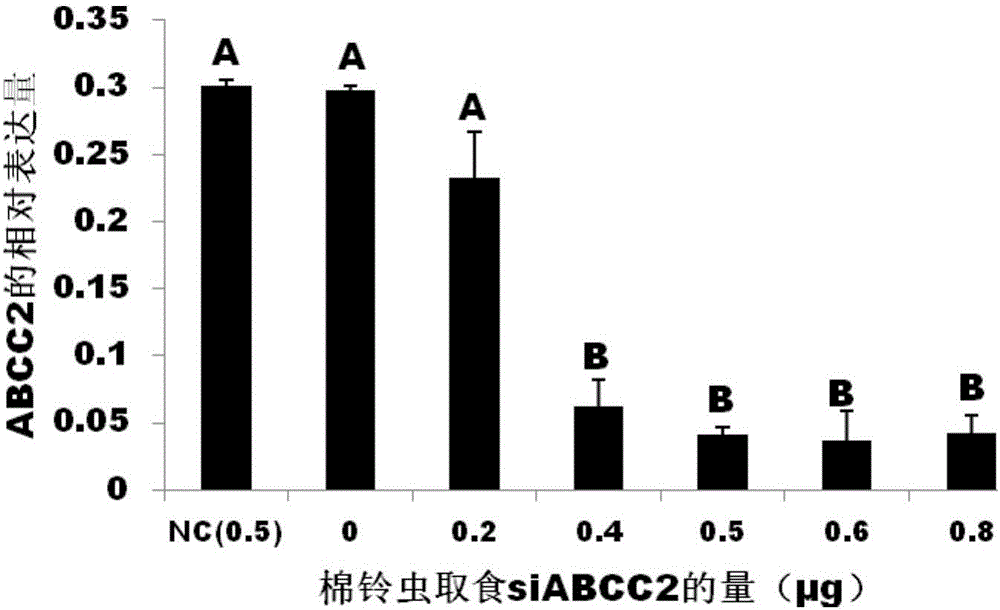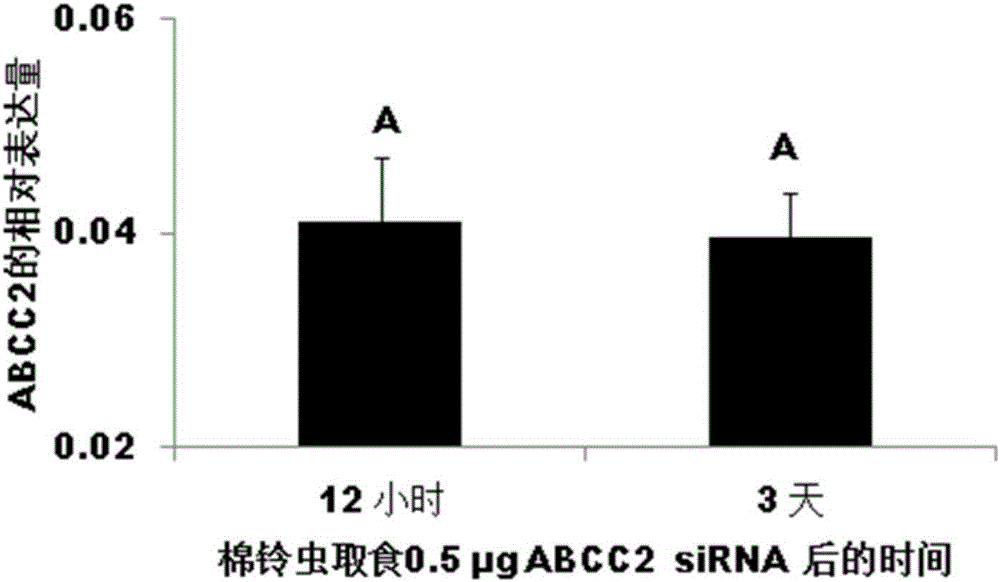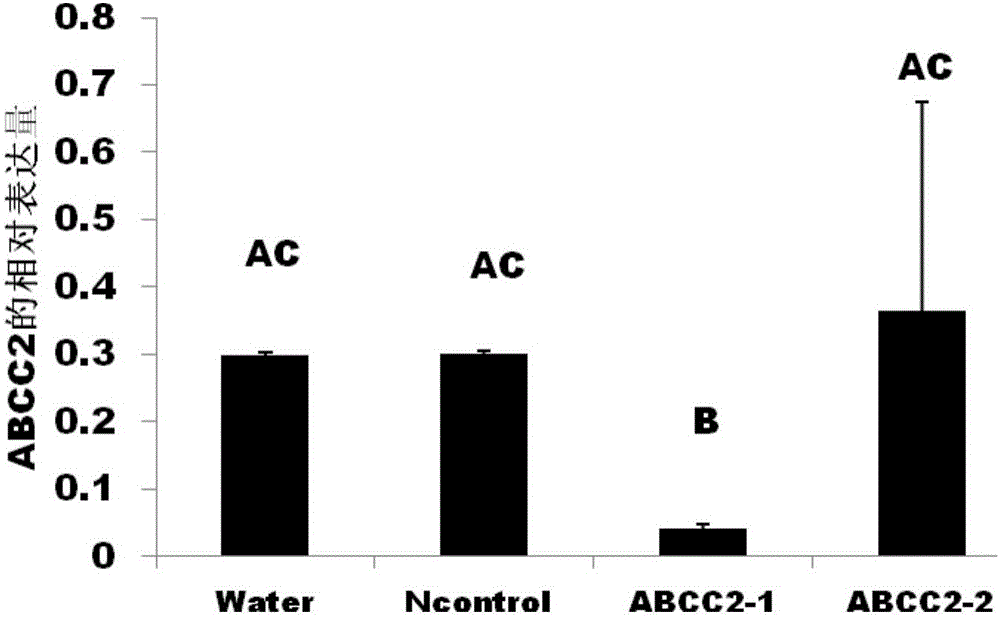Method for researching helicoverpa armigera larva RNA interference efficiency
An RNA interference, cotton bollworm technology, applied in biochemical equipment and methods, microbial determination/inspection, etc., can solve the problems of difficult to eat completely, complicated operation, easy to damage larvae, etc., to improve the efficiency of RNA interference, stable Experimental results, strong operability effects
- Summary
- Abstract
- Description
- Claims
- Application Information
AI Technical Summary
Problems solved by technology
Method used
Image
Examples
Embodiment 1
[0033] This example is used to illustrate the effect of eating different amounts of ABCC2 siRNA on the ABCC2 gene of cotton bollworm
[0034] Experimental object: 3rd instar cotton bollworm larvae, 48 heads, repeated 3 times.
[0035] Dissolve ABCC2-siRNA and control Ncontrol siRNA in DEPC water respectively to make a solution with a concentration of 0.04-0.16 μg / μl, and use DEPC water as a control; prepare the artificial sample of cotton bollworm, and cut the feed into small pieces of 8-10 mg . Put the feed into the small well of the bioassay plate, and drop 2.5 μL of siRNA solution (or control NControl and DEPC water) on the feed. Select the 3rd instar larvae with uniform size and just after moulting, and place them in the above-mentioned small hole after starvation for 12 hours; after 6 hours, the cotton bollworm has completely eaten all the feed, repeat the above feeding; extract the cotton bolls after 12 hours Insect total RNA was reverse-transcribed into cDNA, and the ...
PUM
 Login to View More
Login to View More Abstract
Description
Claims
Application Information
 Login to View More
Login to View More - R&D
- Intellectual Property
- Life Sciences
- Materials
- Tech Scout
- Unparalleled Data Quality
- Higher Quality Content
- 60% Fewer Hallucinations
Browse by: Latest US Patents, China's latest patents, Technical Efficacy Thesaurus, Application Domain, Technology Topic, Popular Technical Reports.
© 2025 PatSnap. All rights reserved.Legal|Privacy policy|Modern Slavery Act Transparency Statement|Sitemap|About US| Contact US: help@patsnap.com



